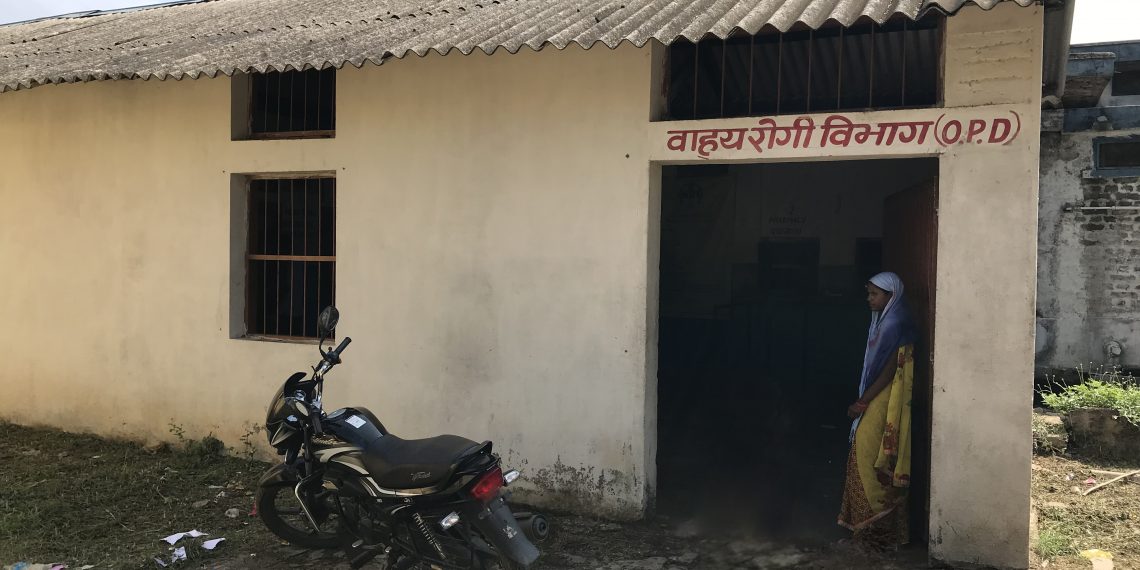Inside the walls of the Nav Jivan Hospital in India’s Palamu district, doctors run from bed to bed treating their patients. Many of the beds in their facility are for people with COVID-19, who may need ventilators as part of their treatment. Aside from the ventilators, the hospital is filled with the sounds of electricity: heart monitors, lights and other necessities for an effective health facility. But, unlike many hospitals in rural India and elsewhere, the doctors do not have to worry about what would happen if the power went out.
Hospitals rely on safe, reliable energy to treat patients, and lack of power can be harmful — if not deadly — to people seeking treatment. Nav Jivan faced many operational challenges that are common for rural hospitals, especially due to erratic electric supply and regular voltage fluctuations. That’s why, in January, Nav Jivan installed a 10-kilowatt peak (kWp) solar photovoltaic (PV) system on its premises.

Solar power has allowed Nav Jivan Hospital to build resilience and have reliable electricity to treat COVID-19 patients. Photo by Nav Jivan Hospital
This technology has given the hospital a new lease on life. Although the system doesn’t meet the energy needs of the entire hospital, it has improved its electricity capacity and stabilized its most critical operations in the intensive care unit.
The move to solar energy made the hospital more resilient at a critical time. As COVID-19 began spreading across the world and governments struggled to set up competent medical support in urban and rural areas, this small hospital was ready. Rural areas face unique risks due to the pandemic, concerning many global health experts, and Nav Jivan shows the life-saving value of sustainable energy in areas where electricity remains unreliable.
Rural Healthcare and COVID-19
COVID-19 has expanded its footprint across India, with over 264,944 active cases and 20,642 deaths as of July 8. A robust, resilient healthcare system has been identified as vital to contain its spread.
On any ordinary day, healthcare centers in remote areas face challenges due to location; limited access to resources, medical supplies and equipment; staff shortages and other factors. The coronavirus pandemic has left these hospitals struggling.
Sixty-six percent of India’s population resides in villages, making the need to prepare rural healthcare infrastructure and sub-centers for the crisis extremely urgent. As of 2019, at least 30% of sub-centers (SC) — which provide basic health care to communities — in 14 states did not have an electricity connection. This accounts for almost 40,000 SCs throughout the country. Although primary health centers (PHCs) are more likely to have electricity, almost 800 PHCs in India operate without it. Data shows that cities with populations of between 20,000 and 50,000 accounted for over half of confirmed COVID-19 cases in early July.

Nav Jivan Hospital, which serves over 450 villages, has beds designated for COVID-19 patients in the area. Photo by Nav Jivan Hospital
Nav Jivan is one of the main healthcare facilities in Jharkhand state in eastern India. Over 75% of the state’s population resides in rural areas. Palamu, a district in Jharkhand, is in the state’s top 15 districts affected by COVID-19. The hospital, serving over 450 villages, has beds ready in the intensive care unit for severe and moderate cases.
The proactive steps taken by Nav Jivan Hospital towards improving its services over the years — and more recently, fortifying its electricity supply with decentralized solar power — have played a significant role in enhancing self-reliance and improving disaster-management capabilities for this rural hospital.
Strengthening Health Systems with Reliable Energy
Nav Jivan’s progress and advancement in facilities was based on years of judicious planning and forethought. For several years, limited infrastructure required the hospital to perform surgeries and child deliveries with flashlights and petromax lamps.
The situation improved considerably when it got three-phase grid connections, but voltage fluctuations combined with frequent and long power outages continued to hamper operations. In addition, inevitable damage to the electricity grid during monsoons led to prolonged periods of power outages, forcing the hospital to depend on expensive (up to over $13,000, or Rs.10 lakh, per year) and polluting diesel generators.

In addition to increased pollution, depending on diesel generators cost Nav Jivan Hospital thousands of dollars a year. Photo by WRI India
Even as the hospital administration searched for alternatives, a doctor who was part of the team made an investment towards the end of last year, funding the installation of its first solar PV system. This 10kWp system takes care of the hospital’s most critical needs, functioning as the primary source of power for running equipment required for treating COVID-19 patients. Solar energy powers the ICU ventilators, including additional ventilators procured from the state for emergencies.
Creating Resilient Rural Health Systems
This pandemic, which has wreaked havoc on world communities, could be a turning point for India’s rural healthcare landscape — provided we learn from it and enhance our capacities through sustainable, energy-efficient systems. Focusing on leaving no community behind must be part of building resilience and enhancing preparedness of our healthcare systems.
Nav Jivan is an example of how, with improved access to reliable energy, rural hospitals can upgrade basic and critical-care services. Decentralized renewable energy can empower rural hospitals by providing uninterrupted services, reducing diesel costs and pollution and improving financial efficiency. To achieve this, it is important to build national- and state-level dialogue on the need for resilient healthcare delivery systems through integrated policies, sustainable technology solutions and innovative financing models.
WRI’s Energy program is currently studying the role of energy for development in some of East African countries’ and India’s most vulnerable areas. In Jharkhand, the team is working with rural hospitals like Nav Jivan to improve access to reliable, sustainable and affordable source of power. Learn more about their work here.



